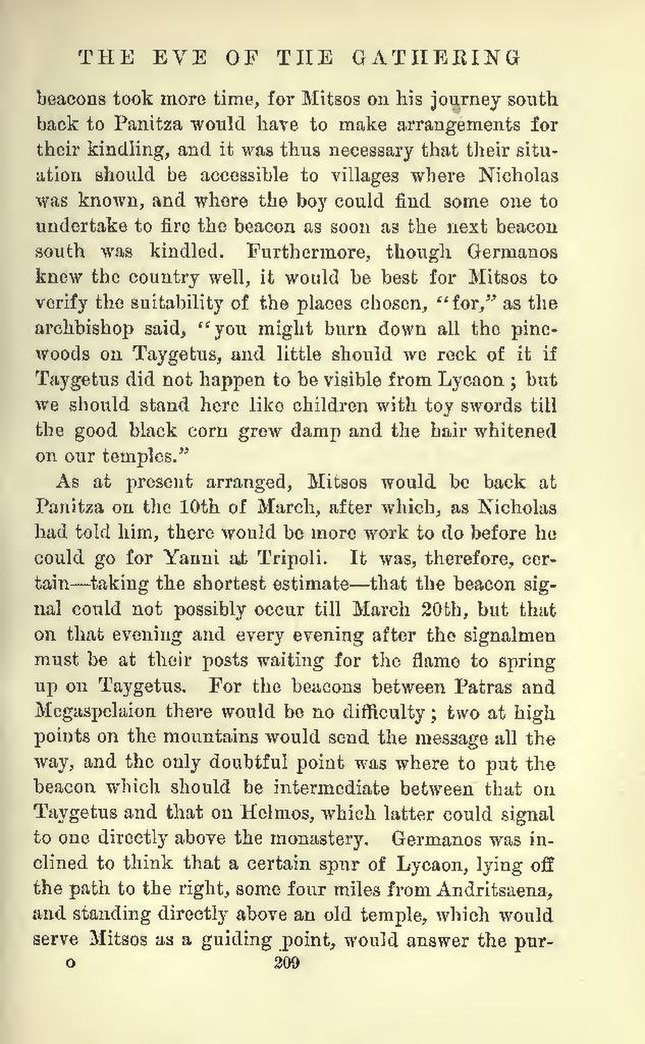THE EVE OF THE GATHERING
beacons took more time, for Mitsos on his journey south back to Panitza would have to make arrangements for their kindling, and it was thus necessary that their situation should be accessible to villages where Nicholas was known, and where the boy could find some one to undertake to fire the beacon as soon as the next beacon south was kindled. Furthermore, though Germanos knew the country well, it would be best for Mitsos to verify the suitability of the places chosen, "for," as the archbishop said, "you might burn down all the pincwoods on Taygetus, and little should we reck of it if Taygetus did not happen to be visible from Lycaon; but we should stand here like children with toy swords till the good black corn grew damp and the hair whitened on our temples."
As at present arranged, Mitsos would be back at Panitza on the 10th of March, after which, as Nicholas had told him, there would be more work to do before he could go for Yanni at Tripoli. It was, therefore, certain—taking the shortest estimate—that the beacon signal could not possibly occur till March 20th, but that on that evening and every evening after the signalmen must be at their posts waiting for the flame to spring up on Taygetus. For the beacons between Patras and Megaspelaion there would be no difficulty; two at high points on the mountains would send the message all the way, and the only doubiful point was where to put the beacon which should be intermediate between that on Taygetus and that on Helmos, which latter could signal to one directly above the monastery. Germanos was inclined to think that a certain spur of Lycaon, lying off the path to the right, some four miles from Andritsaena, and standing directly above an old temple, which would serve Mitsos as a guiding point, would answer the pur-
209
